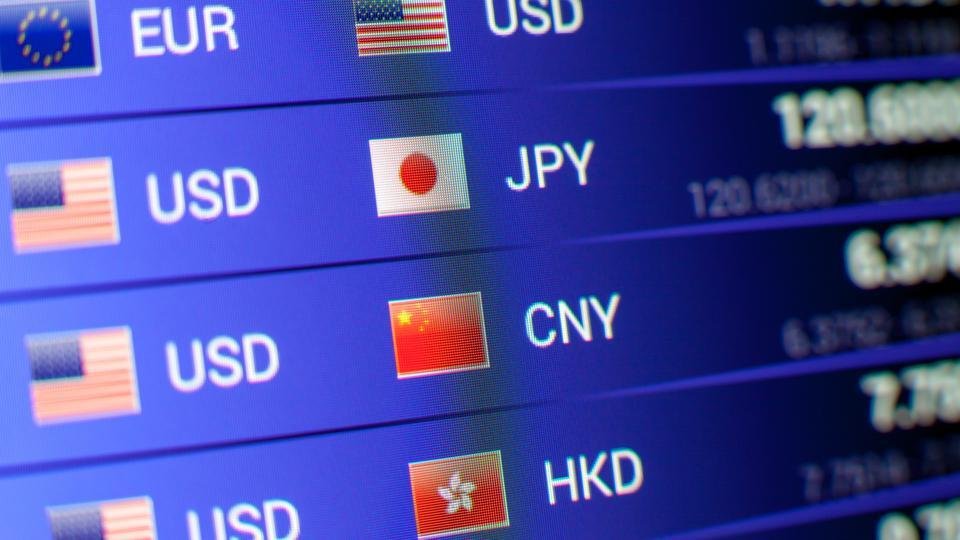- GBP/USD trades below 1.3500 in the European session following Monday’s decline.
- The technical outlook doesn’t yet point to a buildup of bearish momentum.
- A key support level seems to have formed at 1.3430.
GBP/USD lose more than 0.5% on Monday and erased a large portion of the gains it recorded on Friday. After finding support near 1.3430, the pair staged a rebound and was last seen trading above 1.3450.
Pound Sterling Price Last 7 Days
The table below shows the percentage change of British Pound (GBP) against listed major currencies last 7 days. British Pound was the weakest against the Japanese Yen.
| USD | EUR | GBP | JPY | CAD | AUD | NZD | CHF | |
|---|---|---|---|---|---|---|---|---|
| USD | 0.12% | 0.20% | -0.09% | 0.32% | 0.14% | 1.25% | -0.21% | |
| EUR | -0.12% | 0.08% | -0.31% | 0.20% | -0.08% | 1.12% | -0.32% | |
| GBP | -0.20% | -0.08% | -0.54% | 0.13% | -0.11% | 1.04% | -0.40% | |
| JPY | 0.09% | 0.31% | 0.54% | 0.48% | 0.30% | 1.36% | -0.05% | |
| CAD | -0.32% | -0.20% | -0.13% | -0.48% | -0.18% | 0.91% | -0.52% | |
| AUD | -0.14% | 0.08% | 0.11% | -0.30% | 0.18% | 1.16% | -0.28% | |
| NZD | -1.25% | -1.12% | -1.04% | -1.36% | -0.91% | -1.16% | -1.42% | |
| CHF | 0.21% | 0.32% | 0.40% | 0.05% | 0.52% | 0.28% | 1.42% |
The heat map shows percentage changes of major currencies against each other. The base currency is picked from the left column, while the quote currency is picked from the top row. For example, if you pick the British Pound from the left column and move along the horizontal line to the US Dollar, the percentage change displayed in the box will represent GBP (base)/USD (quote).
Safe-haven flows dominated the action in financial markets late Monday and early Tuesday after United States (US) President Donald Trump renewed his threats of imposing tariffs on countries that discriminate against US technology firms. Additionally, Trump said that they will have to charge China “200% tariff or something” if they don’t give them more magnets, referencing to rare earth metals.
In the second half of the day, July Durable Goods Orders and August Consumer Confidence Index data, published by the Conference Board, will be featured in the US economic calendar. The market reaction to these releases are likely to be straightforward and remain short-lived, with positive surprises supporting the USD and vice versa.
Meanwhile, investors will keep a close eye on fresh developments surrounding US President Trump’s feud with Federal Reserve (Fed) Governor Lisa Cook.
Trump announced on Truth Social late Monday that he has fired Fed Governor Cook. In response, Cook released a statement via her attorneys, noting that Trump has no authority to fire her and that she will carry out her duties. If markets grow increasingly concerned over the Fed losing its independence, the USD could come under renewed selling pressure and open the door for a leg higher in GBP/USD.
GBP/USD Technical Analysis

The Relative Strength Index (RSI) indicator stays slightly above 50 and GBP/USD trades above the 100-period and the 200-period Simple Moving Averages (SMAs), reflecting sellers’ hesitancy.
On the upside, 1.3500 (static level, round level, 50-period SMA) aligns as the immediate resistance level before 1.3540 (Fibonacci 61.8% retracement of the latest downtrend) and 1.3600 (static level, round level).
Looking south, support levels could be seen at 1.3460 (Fibonacci 50% retracement, 100-period SMA), 1.3430 (200-period SMA) and 1.3400-1.3390 (static level, Fibonacci 38.2% retracement).
Pound Sterling FAQs
The Pound Sterling (GBP) is the oldest currency in the world (886 AD) and the official currency of the United Kingdom. It is the fourth most traded unit for foreign exchange (FX) in the world, accounting for 12% of all transactions, averaging $630 billion a day, according to 2022 data.
Its key trading pairs are GBP/USD, also known as ‘Cable’, which accounts for 11% of FX, GBP/JPY, or the ‘Dragon’ as it is known by traders (3%), and EUR/GBP (2%). The Pound Sterling is issued by the Bank of England (BoE).
The single most important factor influencing the value of the Pound Sterling is monetary policy decided by the Bank of England. The BoE bases its decisions on whether it has achieved its primary goal of “price stability” – a steady inflation rate of around 2%. Its primary tool for achieving this is the adjustment of interest rates.
When inflation is too high, the BoE will try to rein it in by raising interest rates, making it more expensive for people and businesses to access credit. This is generally positive for GBP, as higher interest rates make the UK a more attractive place for global investors to park their money.
When inflation falls too low it is a sign economic growth is slowing. In this scenario, the BoE will consider lowering interest rates to cheapen credit so businesses will borrow more to invest in growth-generating projects.
Data releases gauge the health of the economy and can impact the value of the Pound Sterling. Indicators such as GDP, Manufacturing and Services PMIs, and employment can all influence the direction of the GBP.
A strong economy is good for Sterling. Not only does it attract more foreign investment but it may encourage the BoE to put up interest rates, which will directly strengthen GBP. Otherwise, if economic data is weak, the Pound Sterling is likely to fall.
Another significant data release for the Pound Sterling is the Trade Balance. This indicator measures the difference between what a country earns from its exports and what it spends on imports over a given period.
If a country produces highly sought-after exports, its currency will benefit purely from the extra demand created from foreign buyers seeking to purchase these goods. Therefore, a positive net Trade Balance strengthens a currency and vice versa for a negative balance.







